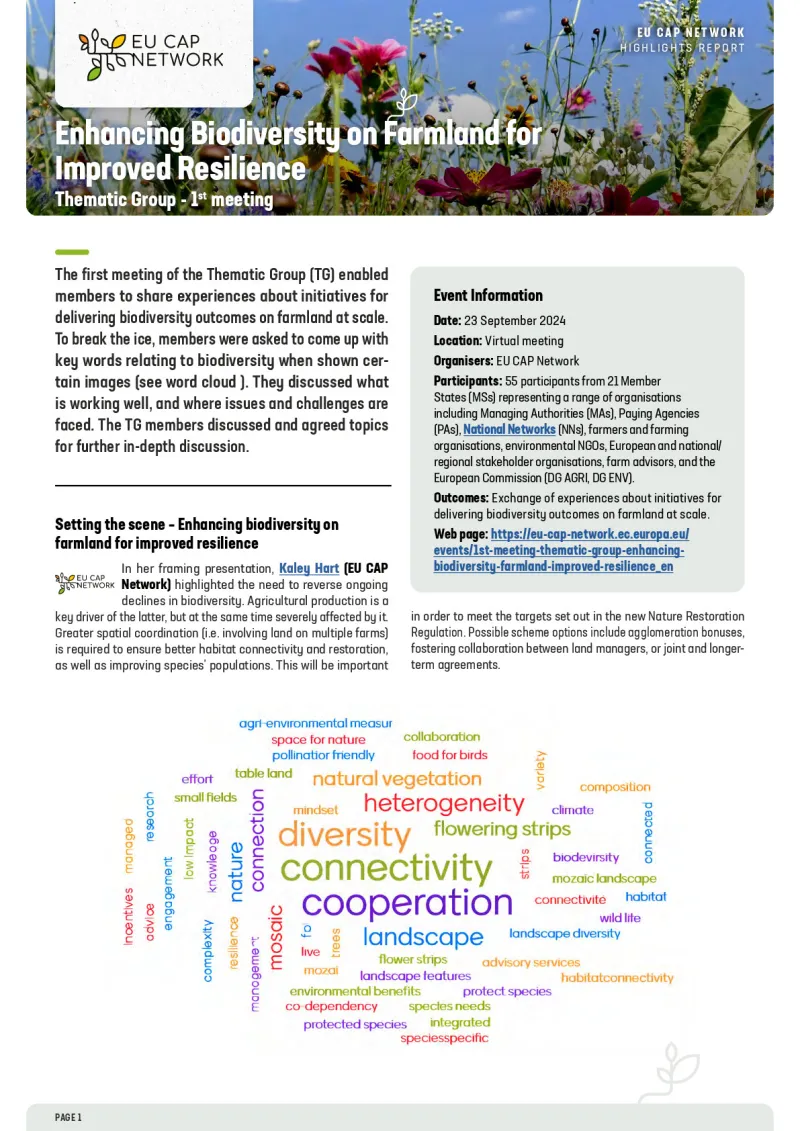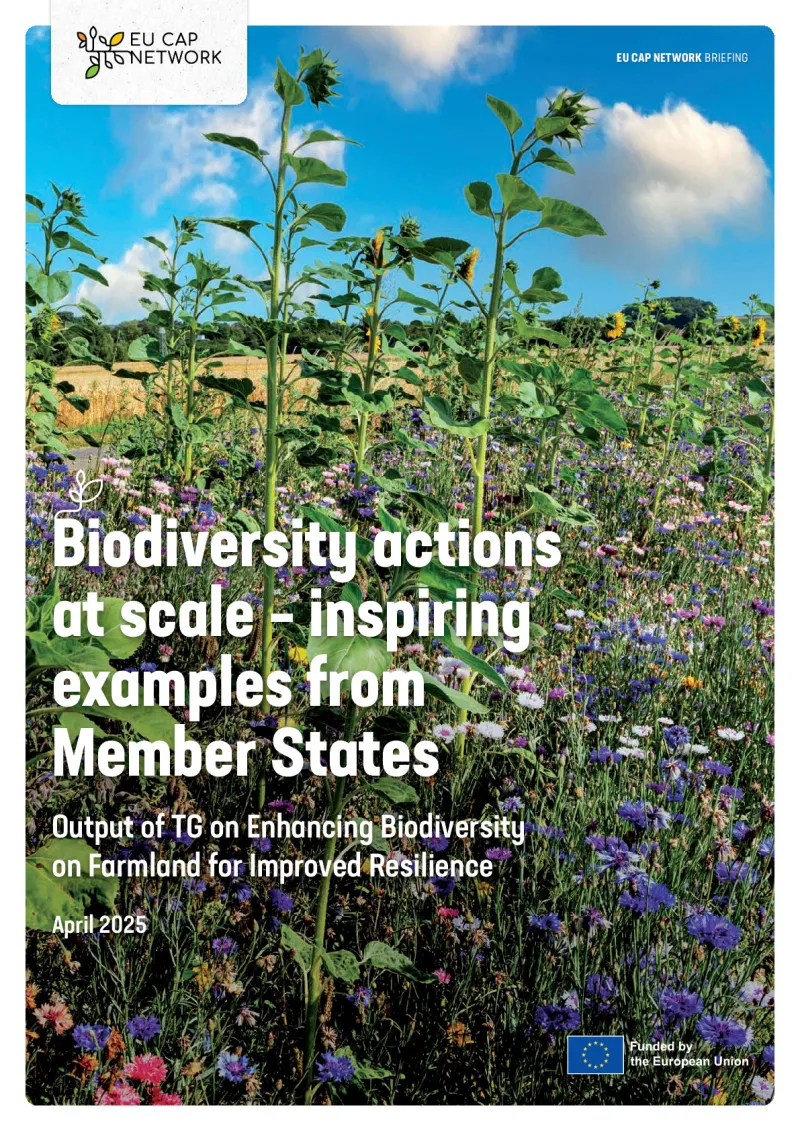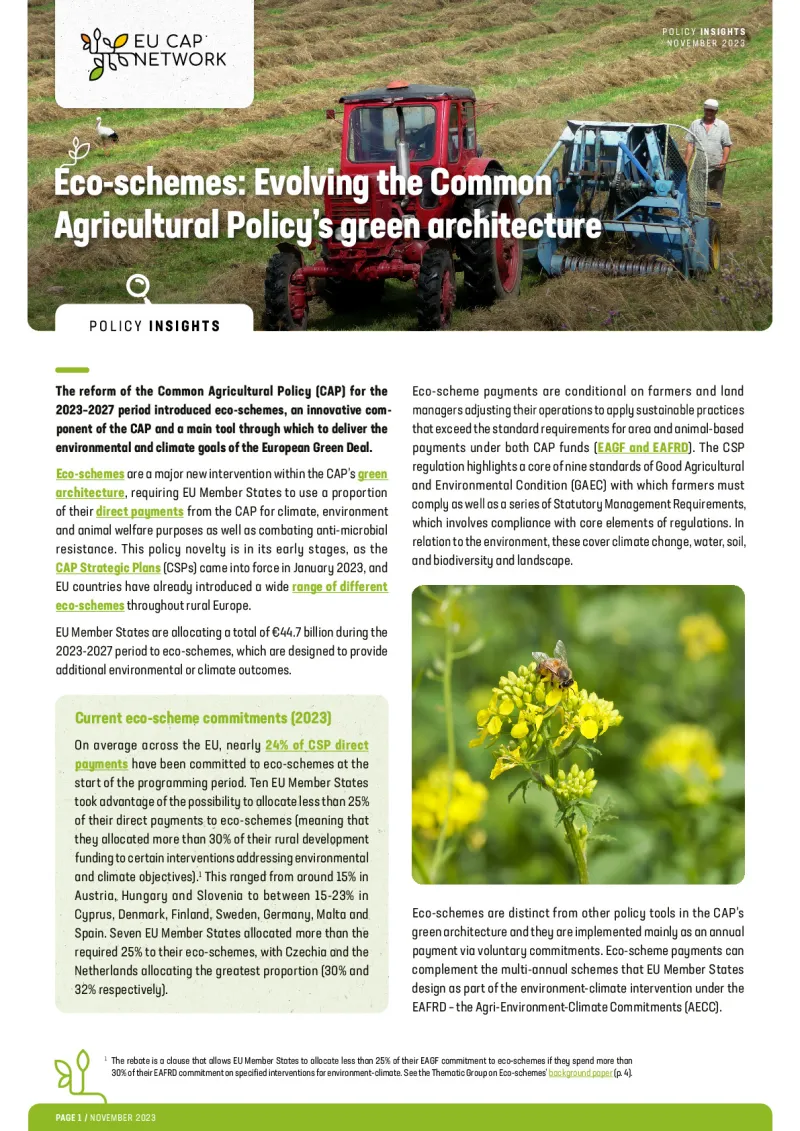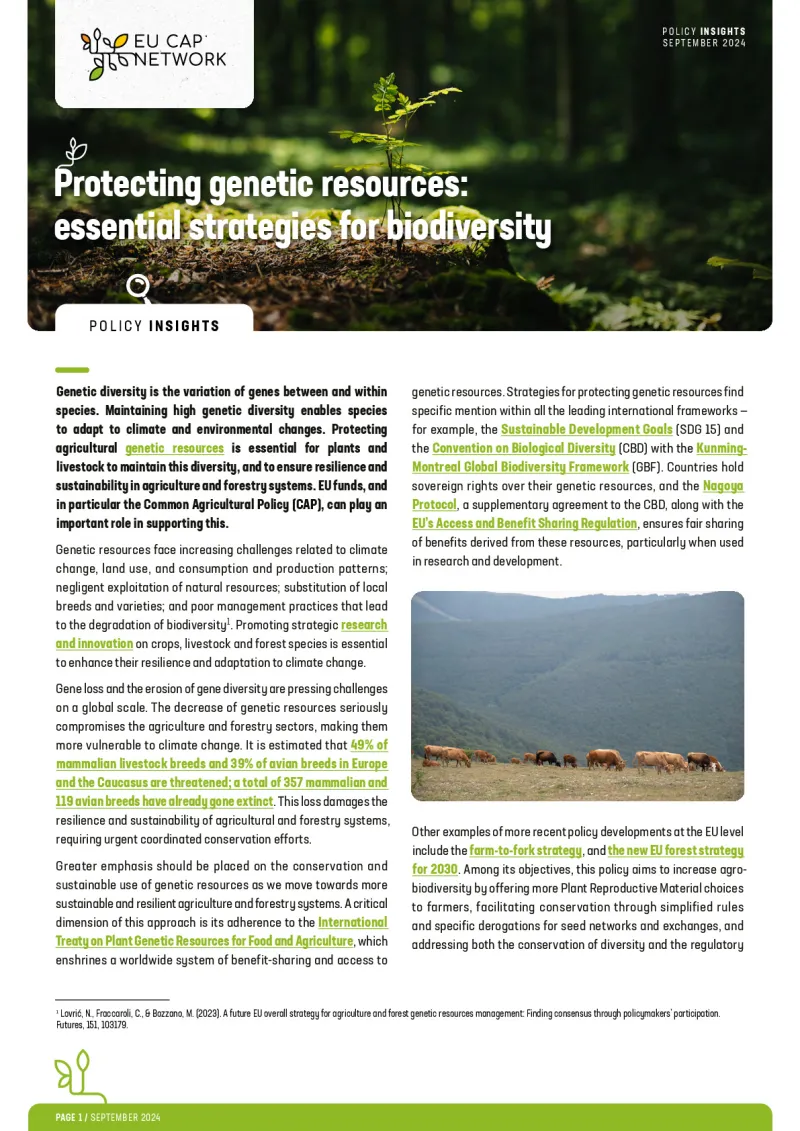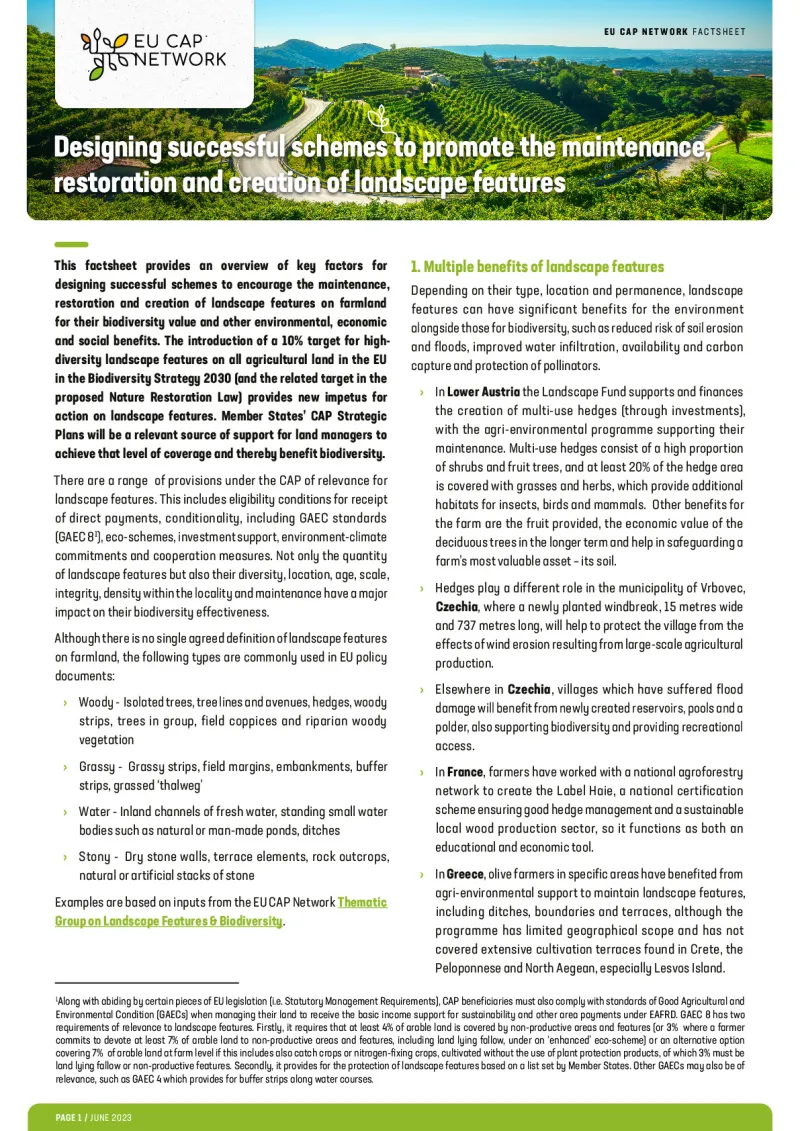Thematic Group on Enhancing Biodiversity on Farmland for Improved Resilience
This Thematic Group was an opportunity to share experiences on the required changes in the design, implementation and uptake of initiatives, to upscale the delivery of biodiversity outcomes, and improve the sustainability and resilience of farming.
Context
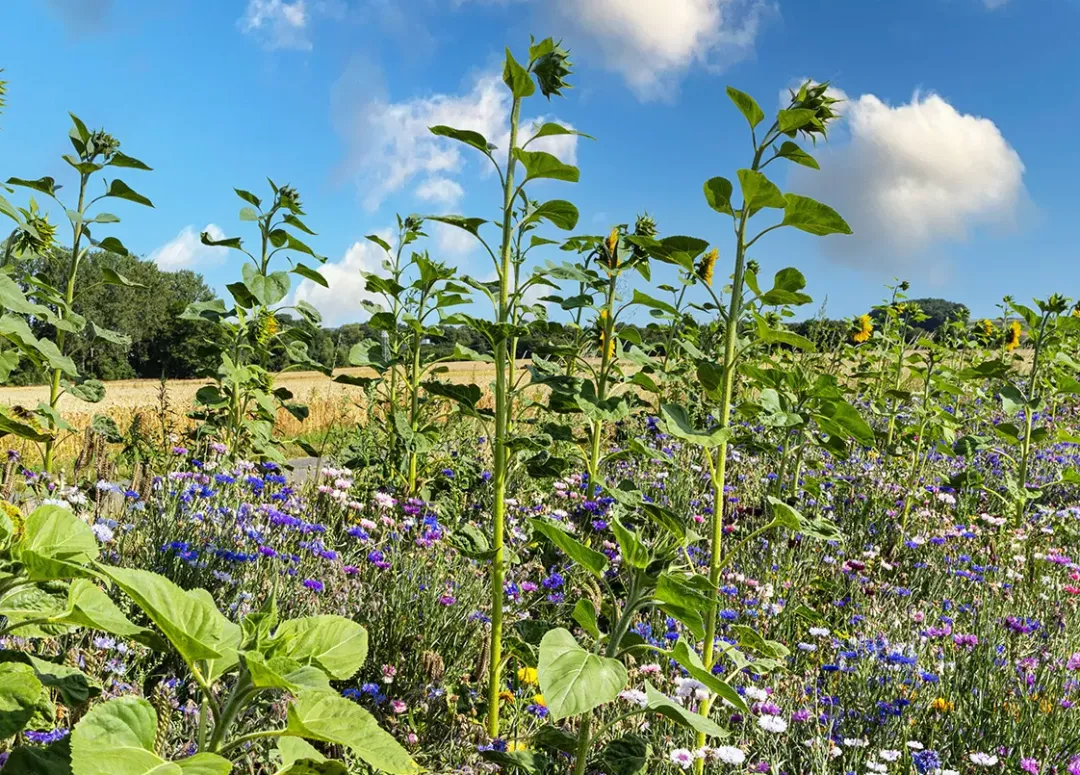
Biodiversity and healthy ecosystems are essential for improving the resilience of farming systems, both food production and sustainable resource management. However, agriculture continues to be a significant driver of biodiversity decline despite the fact that incentives have been in place for farmers to improve farmland biodiversity for decades. In 2024, the Nature Restoration Regulation introduced an overarching legally binding requirement to restore at least 20% of the EU’s land by 2030 and all ecosystems in need of restoration by 2050. This includes requirements on Member States to introduce measures on agricultural land.
Since the Common Agricultural Policy (CAP) provides the most significant source of funding in rural areas to promote the maintenance and restoration of habitats and species, this Thematic Group (TG) was launched to bring stakeholders together to discuss how to improve the delivery of biodiversity outcomes on farmland. The focus of the TG was to look at how the CAP’s interventions could be used to encourage action at a wider landscape scale than is currently commonplace, through collaboration and coordination of action between land managers to achieve greater spatial coordination of actions for habitats and species.
The background document and the list of TG members are available in the Resources section below.
Objectives
The TG's objectives were to:
- Explore how to improve biodiversity outcomes on farmland through greater spatial coordination of actions for habitats and species, including improving the connectivity between farmland and the wider countryside (use of different interventions, scheme design, scheme implementation, measuring outcomes).
- Discuss how to incentivise uptake by farmers of practices and investments to benefit biodiversity and increase the resilience of their farming systems, and the benefits of working collaboratively with other farmers at the landscape scale.
- Examine the role of the advisory services and how these can best be deployed to achieve the outcomes required.
Activities
The first TG meeting (online, 23 September 2024) enabled members to share experiences about initiatives for delivering biodiversity outcomes on farmland at scale (i.e. beyond the individual farm), exploring positive experiences, success factors and challenges faced in the design and implementation. The second TG meeting (Brussels, 13 November 2024) focused on developing recommendations for the changes required in the future to make key factors necessary for improving biodiversity outcomes on farmland at scale a reality. In addition, two informal discussions further enriched the group’s work and focused respectively on (i) practical scheme design for engaging farmers and encouraging landscape scale approaches and (ii) improving the understanding of economic and environmental benefits of biodiversity action.
The outcomes of the TG meetings are highlighted in the event reports available below.
Key findings
The TG developed a briefing compiling inspiring examples that promote collaborative biodiversity action on farmland beyond the single farm from different Member States. These initiatives are funded from a range of sources, including the CAP (see also, but also other EU funds (e.g. LIFE, Interreg, Horizon Europe) and national funding. The majority of the examples are from initiatives that support the management of farmland for biodiversity purposes. However, at the end of the document, a small number of other examples are included of initiatives exploring other means of stimulating biodiversity action at scale, such as via market signals or the use of biodiversity credits. The purpose of this briefing is to give a flavour of the range of initiatives that are happening in different parts of the EU to provide inspiration to others – it is by no means a comprehensive list.
The TG also formulated a number of policy recommendations, reflecting TG members’ practical experience and the lessons learnt during the work of the TG. Key points (full version is included in the briefing) include:
Scheme design:
- Funding for biodiversity should be increased, particularly for collective action.
- Private sources of funding to complement CAP funding should be investigated.
- Piloting new approaches for delivering landscape-scale action before they are rolled out should become the norm, using opportunities available under the CAP’s cooperation intervention and involving farmers in scheme design.
- Payments should be sufficient to incentivise action, with a focus on the provision of ecosystem services across the whole farm, using a mix of approaches (mandatory / voluntary).
- Consider monitoring requirements (including indicators) when designing schemes.
- Design low threshold results-based schemes to generate high uptake as part of a learning process – thresholds can be increased over time.
Scheme implementation & monitoring:
- Greater investment in collective action should be prioritised.
- Improvements in monitoring are required to streamline what and who is monitored and how this is done.
- All reporting to the EC should be harmonised and adequate funds should be made available for this purpose.
- Reduce the complexity of rules and requirements relating to scheme implementation to allow more flexibility for farmers e.g. through results-based schemes.
- Give farmers the option to test result-based schemes first before committing to multi-year agreements to reduce the risk to farmers.
Communication and capacity building:
- Peer-to-peer learning should be available to all to enable the sharing of experiences and increase understanding of what works.
- The added value of biodiversity action should be better articulated and explained.
- Consider new ways of communicating research findings and monitoring results to farmers, e.g. through focus groups, podcasts, exhibitions etc.
- Invest in training for Paying Agencies so they are aware of the latest data and monitoring technology to avoid good measures being rejected.
- There should be greater cooperation between stakeholders and monitoring and advisory services, e.g. AKIS stakeholders, CAP Networks, agricultural chambers and environmental experts.
- Continued investment in research and innovation on biodiversity and agriculture is essential.
- Engage consumers more directly in appreciating the value of products from farms with enhanced biodiversity.
Learn more
Scroll down this page to find all the outputs of this Thematic Group and relevant resources related to this topic.
You can find other useful resources about this theme in our Publications section and in our Good Practice database.
If you have any questions or suggestions, please contact us at implementation@eucapnetwork.eu.
If you want to be informed when new content is available on this or related topics, subscribe to the EU CAP Network newsletter.

